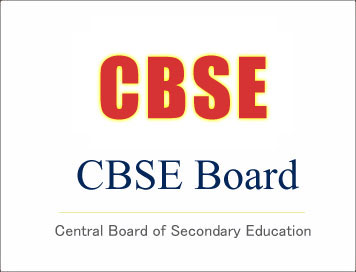(News) Urban CBSE students Numbers Increasing in IIT -JEE
Disclaimer: This website is NOT associated with CBSE, for official website of CBSE visit - www.cbse.gov.in
Central Board of Secondary Education
How IIT-JEE is becoming the stronghold of CBSE, urban students
For very long the venerated and coveted IITs and their entrance exams have been considered as the great leveler in India, a country where inequality and diversity are two sides of the coin. Students from villages, from uneducated backgrounds and low economic strata have qualified for these exams. But now this notion seems to have turned on its head.
A statistical analysis of the results of 2012 admission tests by scientists at Indian Statistical Institute (ISI) in Kolkata shows that certain Boards, students from high income families, and urban areas bag most of the IIT seats. In fact, among those who had registered, students from higher income group have a four times higher success rate than those from lower income group.
As for the Boards, IITs picked over 57% of their selected students in 2012 from CBSE, a board that represents 6% of their target group.
Isn’t that shrinking the supply base of these institutions to a disastrously narrow band? And if you’ve followed the rather messy process of “improving” the supply base of IITs – not to get just factory-produced students whose primary (and secondary) aim in life becomes to ‘crack’ the admission test and then lose steam when the actual learning starts at IITs – then you’d see below how even the new system that was adopted in 2013 beats the entire purpose of admissions revamp downright hollow. Predictably, the preliminary analysis of 2013 JEE-Advanced results shows that CBSE predominance continues.
The cat and mouse game of ‘normalization’
In an exemplary act of transparency (and in the interest of the people), ISI has made public the entire minutes of meetings and deliberations that took place over the last two years leading to the 2013 IIT revamped entrance test. ”Why there was a lag between the last meeting and the publication last week”, says Debasis Sengupta of ISI. “We just wanted to put forth everything before the public.” Beyond that he’d not say anything except lament that all good intention behind the revamp remains just that – an intention. IITs are still not selecting the brightest students, if anything, the reality distortion field for the Boards, other than the CBSE, looks more unfriendly.
Because there are dozens of Class XII Boards, a long-drawn process was adopted to arrive at a new admission process that gave weightage to entrance exam scores and normalized class scores.
“When performances from multiple exams are to be combined, it is usually apples and oranges. So extensive simulations on past data has to be conducted to make sure the outcomes are fair. I very much doubt if any of this was done. More thought and simulation has gone into the Duckworth-Lewis system in cricket,” says V Vinay, chairman of LimberLink Technologies and President of the Indian Association for Research in Computing Science.
Debasis Sengupta says a lot of work went into the statistical inputs that ISI gave for the normalisation process. But as the documents show, none of the suggestions was adhered to.
In short, the cut-off scores for IITs are too “weak” and not the best way to select really good students, especially students with analytical and problem solving skills.
Read More..
Courtesy : First Post
